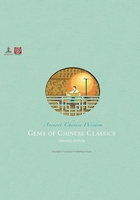
考工记 (kǎo gōng jì)
The Records of Examination of Craftsmen
Technology handbook from 2,500 years ago
Compiled nearly 2,500 years ago, Kaogong Ji, or “The Records of Examination of Craftsmen,” was the first classic book on science and technology in the world. For centuries, it exercised a great and far-reaching influence on ancient Chinese science, technology, craftsmanship and culture.
Commissioned by the State of Qi and produced by a group of scholars, the 7,100-character document was first circulated in the Qi state in the later Spring and Autumn Period (770-476 BC) and amended in the middle and later Warring States Period (475-221 BC).
It details official technical standards for craftsmen and workers in 30 industrial trades, including carpentry, metalworking, leather processing, dyeing, ceramics, jade processing and architecture.
It also provides detailed guides and test rules for making musical instruments, producing chariots and other vehicles, building palaces and manufacturing weapons.
Many of these guides and rules were based on experiences accumulated by many generations of craftsmen, involving knowledge of wide-ranging scientific and technological fields, such as mathematics, mechanics, acoustics, metallurgy and architecture.
The purpose of this book was to promote the production of high quality, refined products. It defines time, locality, materials and craftsmanship as the four essential elements and preconditions for making quality products.
For time, it means that different seasons and climates can affect the quality of production of raw materials; and for locality, it means raw materials of best quality usually come only from selected locations. For craftsmanship, the book states that it relies largely on appropriate labor division. For instance, it defines seven different types of carpenters, six categories of metalworkers, five types of leather workers and five categories of jade workers.
The text also points out that if a worker concentrates only on a very specific and limited area of a trade, he is more likely to achieve superb craftsmanship. It is said that wise and bright workers come up with inventions, while capable ones can reproduce those inventions and carry on the fine traditions.

To promote agricultural production, the book deals at length with the manufacture of farming implements. It describes in meticulous details the production process of the ancient Chinese plough — the selection of metal, the shape, angle and weight.
It also provides blueprints for building sophisticated irrigation systems, proposing the width and depth of different dykes, as well as the degrees of their slopes in different geological conditions.
In addition, the book shows a special interest in building vehicles. It asserts that the wheels of any vehicle, such as barrows for transporting farm produce or chariots for battle, must be perfectly round, as this can reduce friction to an “infinitesimal degree” and lift the speed of the vehicle.
The book also contains a large number of illustrations on how to produce various weapons, such as bows and arrows, spears, swords, axes and shields. To make strong and sharp weapons, the book lists the correct proportions of pure copper and tin required to produce the bronze for specific weapons or vessels.
For architecture, especially for imperial palaces, the book stipulates very strict rules to reflect the deep-rooted Chinese belief in geomancy and the hierarchical social system. Many imperial palaces built in ancient China strictly followed the construction rules prescribed in the book.
The Forbidden City in Beijing is a good example. The layout and function of areas of the ancient imperial palace were designed according to “The Records of Examination of Craftsmen” to demonstrate the exceptional majesty and supreme stateliness of the emperor.
In the past century or so, when China began to introduce Western science and technology, many scholars and researchers have brought modern methodology to study “The Records of Examination of Craftsmen.”
This has led to a better understanding of and many new discoveries about this ancient classic work on science and technology.